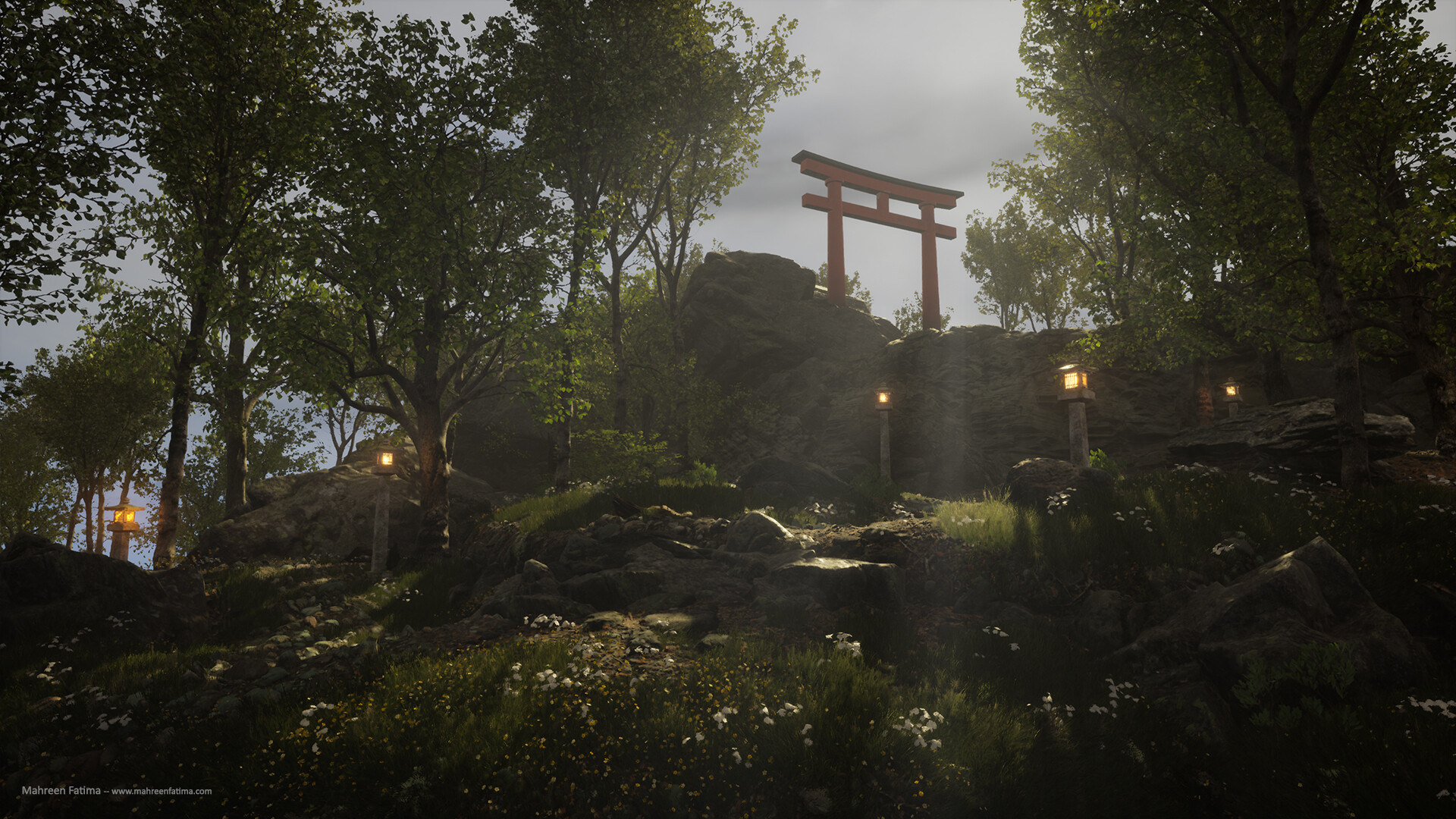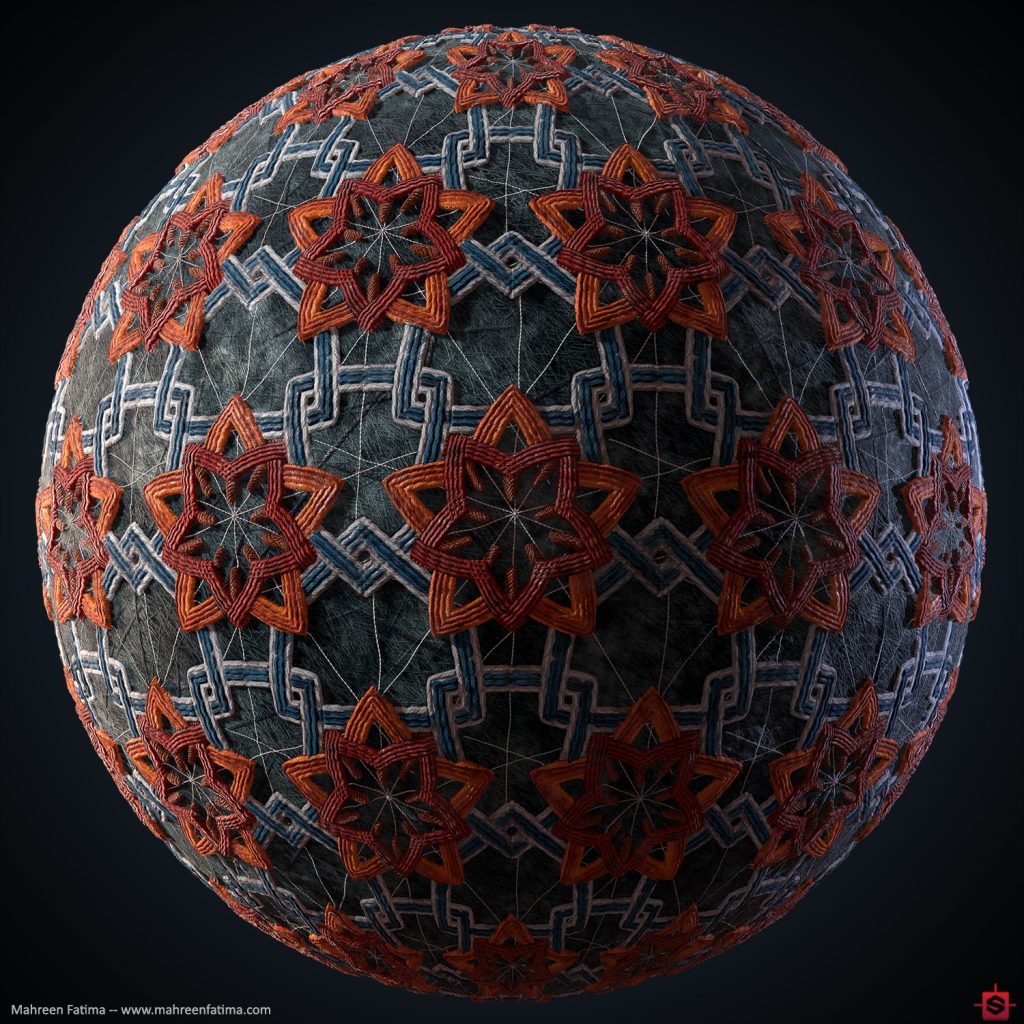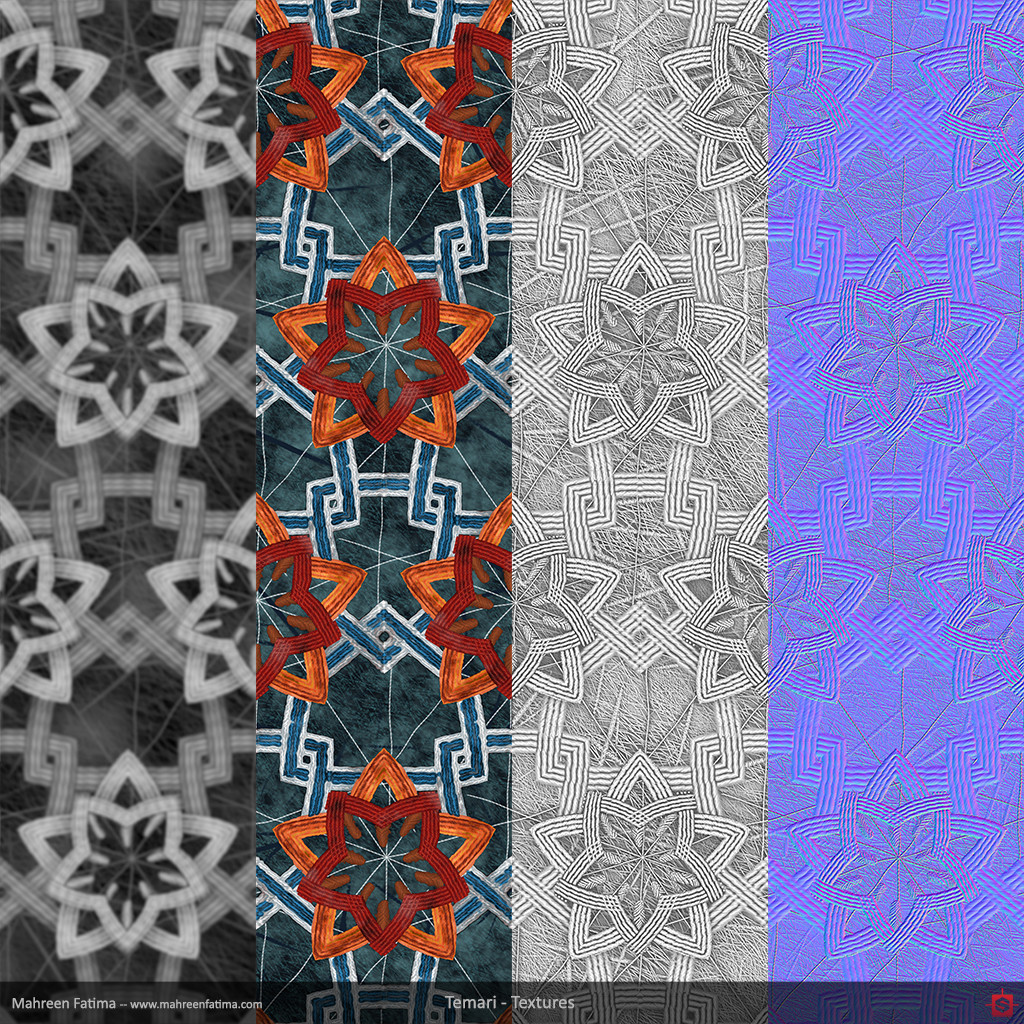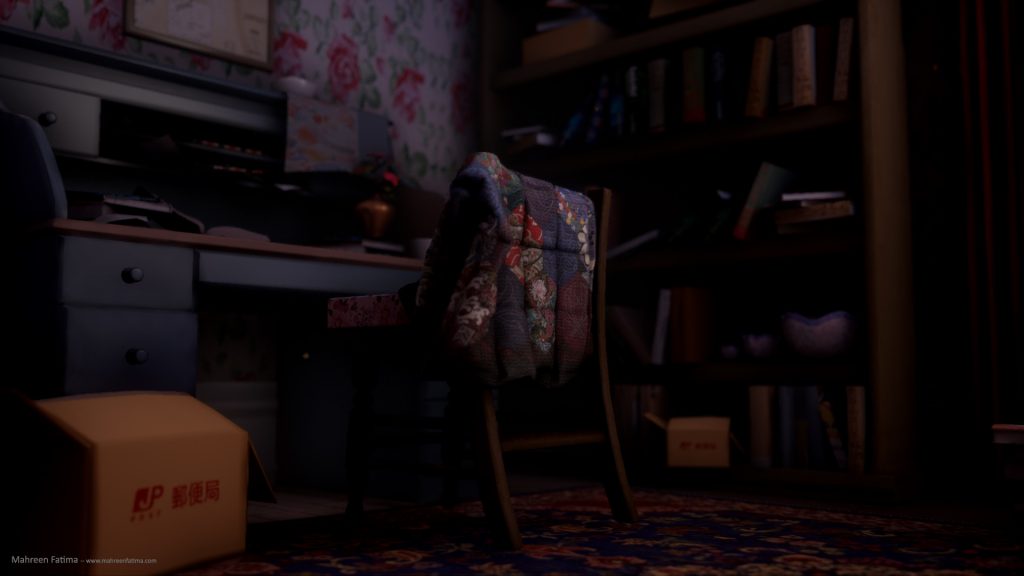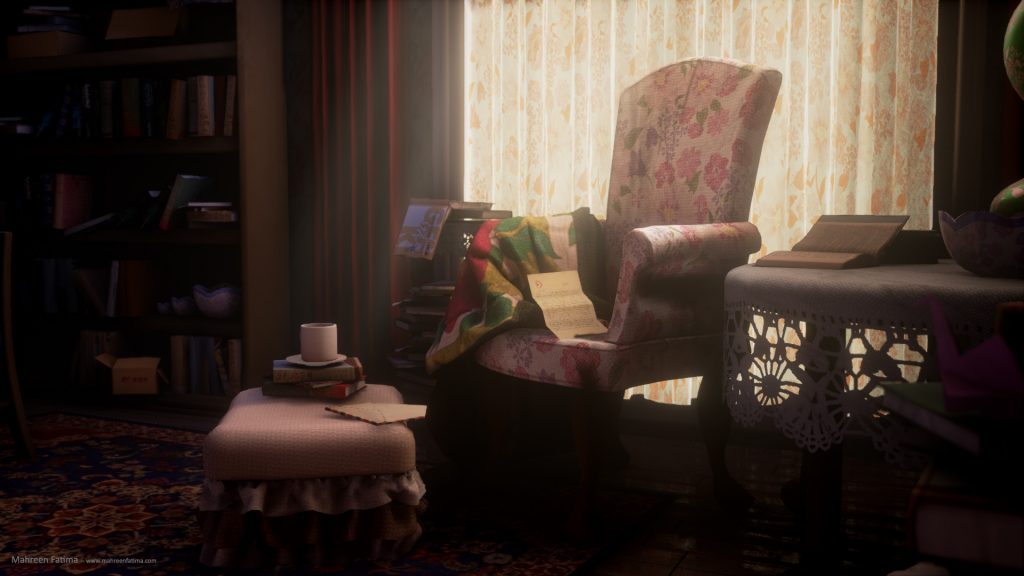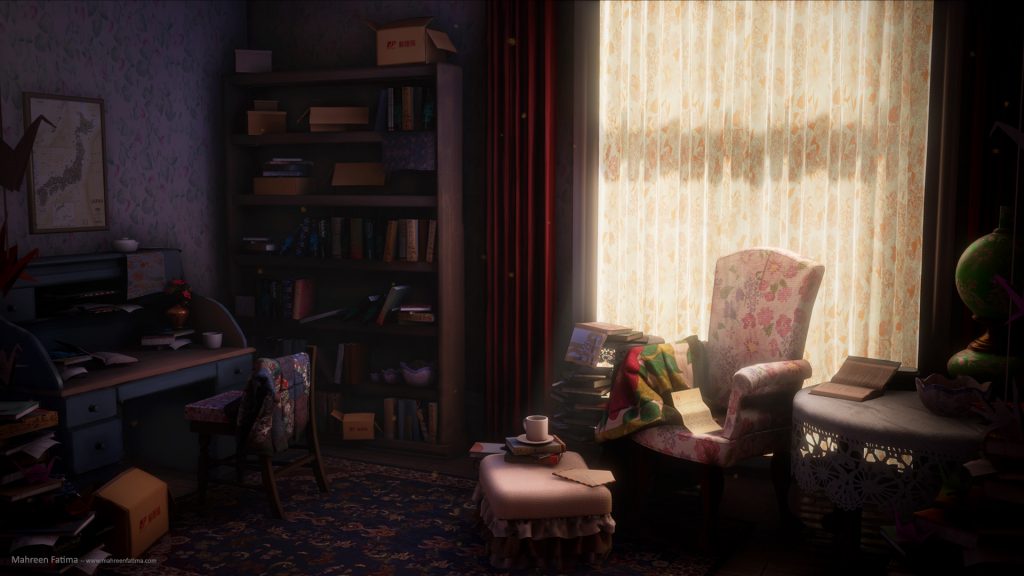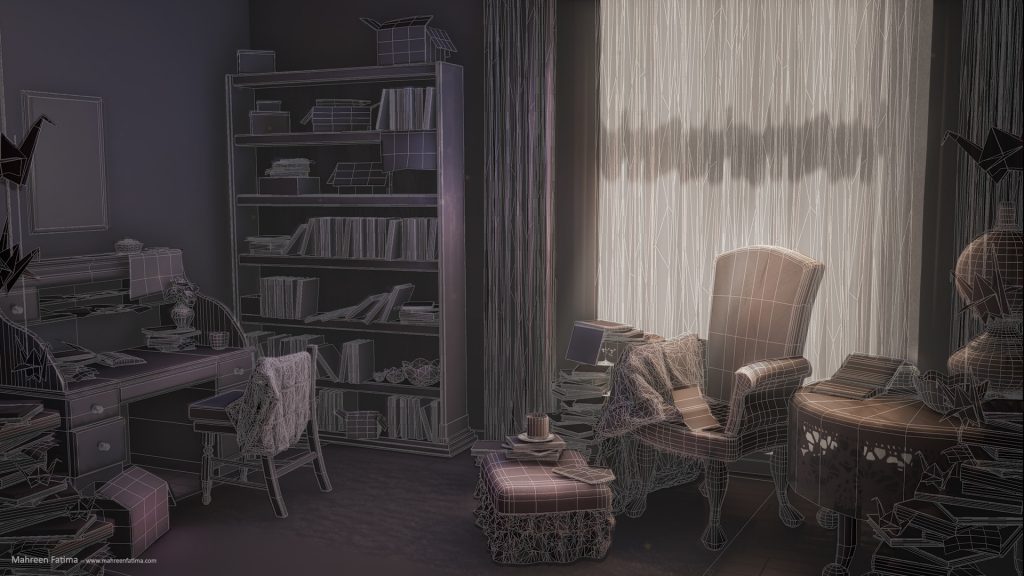ITGM Alumni Interviews: Mahreen Fatima
Mahreen Fatima graduated from SCAD in 2017 with a B.F.A. in Interactive Design and Game Development. She has a passion for telling stories through environments, which has allowed her to excel in world building, modeling and texturing. Mahreen’s previously worked for Amazon, creating multiple photorealistc 3D models. Currently, she works in Washington at Oculus. There, she is utilizing 3D scanned data to study human interactions in virtual reality. To see more of Mahreen’s work, check out her portfolio at www.artstation.com/mahreenfatima
Where are you from? Where are you currently working?
I am from St. Louis, Missouri and I am currently working at Oculus VR as a 3D Artist. However, I have accepted a position as a World Building Artist at 343 Industries so I will be transitioning into a new role shortly.
How did you find out about SCAD, and why did you decide to go?
When I first started looking into colleges that had game development programs after high school I noticed that a lot of them offered strictly game design or game programming courses. I specifically wanted something that offered a creative career path which shortened my options down to colleges like SCAD, Ringling, Gnomon, etc. In the end, I chose SCAD because of its
successful alumni, location, and high school friends who were thinking of attending the college with me.
When did you graduate, and what was your experience like in your first few months after graduation?
I graduated in Spring 2017 and what came next was a roller coaster ride.
Before I graduated, my SCAD roommates and I had already decided that we were going to try and get our careers started in Seattle. Why? Seattle has a booming tech/games industry, is more affordable than other west coast cities, and I already had friends who lived there. The weekend after I graduated my roommates and I packed up my 2008 Nissan Sentra and began driving across the country – without any jobs, without ever visiting Seattle, and with about 2 months of savings (which we promptly chewed through just getting to Seattle). We drove up to Massachusetts to see my roommate’s family, through Missouri and Colorado to see my family and my other roommate’s, visited Yellowstone and The Grand Tetons, relaxed in hot springs in Montana, and finally landed in Seattle after 2 weeks. My first week in Seattle is the most memorable. We set foot in our apartment on Monday morning, we got internet turned on for our apartment on Tuesday, I got a call about an art test for Amazon on Wednesday, and on Friday I had an interview and an offer to start at Amazon as a 3D Artist. The months that came afterwards included a plunge into learning and getting better at 3D art and making friends and connections in my industry.
How did SCAD contribute to your success?
The biggest ways that SCAD can contribute to your success is by helping you make connections and by surrounding you with people who will challenge you to get better at your craft. Together, these two qualities will usher out the best version of you. It is because of SCAD that I met the people that have pushed me to become the professional that I am today and that has, in turn, put me in a push a position where I can continue to help others.
“Speaking specifically for those who are looking to break into the game industry: SCAD GDN (The Game Development Network) and GDX are essential pieces to the networking and portfolio puzzle.”
What resources worked best for you/you recommend others take advantage of?
Speaking specifically for those who are looking to break into the game industry: SCAD GDN (The Game Development Network) and GDX are essential pieces to the networking and portfolio puzzle. Attending GDN and GDX meetings, meeting professionals through these events, and getting more involved with these organizations taught me how to network and helped me gain valuable feedback on my portfolio – key elements to job hunting.
What do you think has allowed you to succeed?
Keep learning and working on your portfolio. Even when I got my first job at Amazon I did not stop working on my portfolio because digital media industries are very tumultuous. Competition is fierce, the work you do at work may never become public, and companies can afford to the pick the cream of the crop and ignore the rest. No job is forever so you must continue to learn and add more to your portfolio to stay relevant. Even now, I still work on personal projects outside of work to make sure I’m always adding new content to my portfolio.
How has your career changed/progressed so far?
So far in my career of 3D art I have had the opportunity to work in various types of industries. At Amazon I worked on a small start-up style Product Imaging team which meant that I was working alongside photographers and furniture companies to design the future of digital shopping. At Oculus, I have primarily worked on a hardware R&D team alongside human factors
engineers, statisticians, and product designers. These are both wildly different experiences from what I studied at SCAD – game development – but it means that my perspective on 3D is that much more varied and developed. My previous experiences allowed me to work on shader and
tools R&D teams, be on the cutting edge of photogrammetry and 3D scanning, and author a substance designer pipeline for procedurally texturing thousands of models – very broad experiences that are hard to gain at a studio where you are asked to be very specialized.
Has the industry surprised you at all? How and why?
I know everyone says “the industry is very small” but it is very true. Perhaps you won’t realize it until you’re in the industry yourself but almost everyone knows everyone else personally or through a friend. They could be living in a different city or even country, but the industry is very tight-knit, and everyone keeps tabs on each other. On more than one occasion it has turned out that two separate social circles of mine have known each other all along. Therefore, it is very important that you are aware of your actions so that you consistently make good impressions.
Could you describe some challenges or obstacles that workers in your industry currently face? How have you dealt with them?
I feel that the biggest challenge in the game industry currently is simply breaking in or landing a specific position you want. This is a very saturated market and you are competing not just with everyone else you are graduating with but with people all around the world and industry
professionals who already have experience. It can seem daunting sometimes: How can you standout in a sea of professionals? While there’s no silver bullet to the problem, here are the three main ingredients that have worked for me:
Portfolio – Needless to say, keep working on your portfolio and keep learning. The moment you stop and start to stagnate is the moment things start getting harder and not easier.
Social Media – Make a name for yourself. Get on ArtStation, interact with other artists, get into communities like Ten Thousand Hours on Facebook to get more feedback, be as interactive as possible. Making a name for yourself means people will think of you when they need a “sci-fi prop artist” or a “foliage artist”, etc.
Network – After you’ve made the proper social media accounts it’s time to start networking more. Message artists at the companies you want to land in for a portfolio critique, go to meetups, ask your professors and colleagues to introduce you to more connections.
“Go grab your friends, jump in someone’s car, and do a small road trip around the south. Call it research.”
Is there anything you wish you took advantage of/did at SCAD that you think others should?
The one thing I regret from my time at SCAD is not actually living the Savannah experience. We get so caught up on working on our portfolio, doing finals, and stressing out about jobs that we forget to stop and enjoy the city. For many of us, Savannah is not our hometown and we don’t take advantage of the opportunity to really soak up the history in the cobblestones, the flowing Spanish moss, and the restored architecture of our buildings. Looking up from our computers and taking a walk outside is just as important as working. Where we draw our inspiration and ideas from – our visual library – consists of the experiences we take in. Go grab your friends, jump in someone’s car, and do a small road trip around the south. Call it research.
Any advice for students when it comes to their educational career or their career in the industry?
All the classes you take will become useful in your career. I started out as a Psych major in a different college with credits in classes such as advanced
Calculus and I have already used all that information and only regret not taking more. Don’t stress about spending your electives in different majors because it only helps you bring a more interesting perspective to the table.
Where do you find your inspiration?
Inspiration can honestly come from anywhere, but I have three main places that I go to: Artstation, Pinterest, and Reddit.
